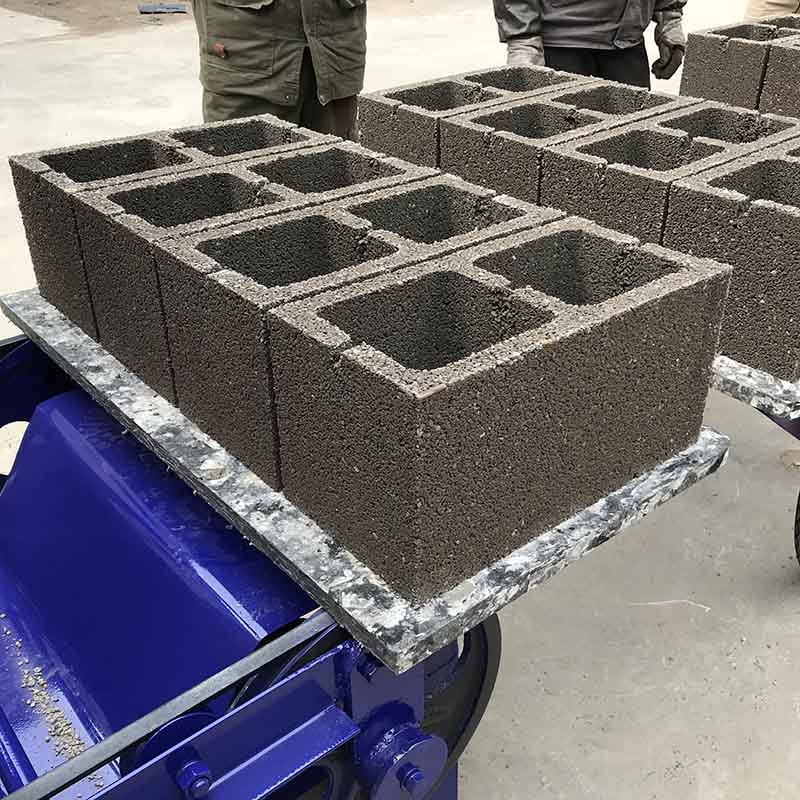 Image source:Aiwei block machine
Image source:Aiwei block machine
Introduction
The advent of digital technologies has revolutionized various industries, and the construction sector is no exception. Chinese brick making machines have embraced the digitization of production processes, incorporating advanced technologies to enhance efficiency, productivity, and quality. This article explores the digitization of production processes in Chinese brick making machines, discussing key advancements such as automation, data analytics, remote monitoring, and predictive maintenance. We will also delve into the benefits and future prospects of digitization in the brick manufacturing industry.
Automation and Robotics
Automation is at the forefront of digitizing production processes in Chinese brick making machines. These machines employ sophisticated robotics and control systems to automate various tasks, minimizing the need for manual labor and human intervention. Automated processes include material handling, mixing, molding, brick stacking, and even packaging. By automating these tasks, brick manufacturers can achieve higher production rates, improve consistency, and reduce the risk of errors.
Automation also allows for greater precision and accuracy in material measurements, resulting in optimized resource utilization and reduced waste. Additionally, automation improves workplace safety by minimizing the exposure of workers to potentially hazardous conditions.
Data Analytics and Real-time Monitoring
Chinese brick making machines are equipped with sensors and data collection devices that capture valuable production data in real-time. This data includes information on machine performance, energy consumption, material usage, and brick quality parameters. Through advanced data analytics techniques, manufacturers can analyze this data to gain insights into production trends, identify bottlenecks, and make informed decisions to optimize their processes.
Real-time monitoring enables manufacturers to detect deviations and anomalies during production, allowing for immediate corrective actions. By closely monitoring key performance indicators, manufacturers can improve process efficiency, reduce downtime, and ensure consistent product quality.
Predictive Maintenance
One of the significant benefits of digitization in Chinese brick making machines is the implementation of predictive maintenance strategies. By analyzing machine performance data, manufacturers can detect early signs of equipment deterioration or malfunction. Predictive maintenance allows for proactive maintenance scheduling, reducing unplanned downtime and optimizing the lifespan of critical components.
Through condition monitoring and predictive algorithms, Chinese brick making machines can identify potential issues before they escalate into costly breakdowns. This proactive approach to maintenance minimizes repair costs, enhances machine reliability, and ensures uninterrupted production.
Integration with Enterprise Resource Planning (ERP) Systems
Digitization has facilitated the integration of Chinese brick making machines with enterprise resource planning (ERP) systems. This integration enables seamless data exchange between the production line and the business management software. By connecting production data with inventory management, supply chain, and sales modules, manufacturers can achieve better production planning, inventory control, and customer order fulfillment.
ERP integration provides manufacturers with a holistic view of their operations, enabling data-driven decision-making and improved resource allocation. It also streamlines administrative tasks, reduces paperwork, and enhances overall operational efficiency.
Remote Monitoring and Control
With the advancement of digital technologies, Chinese brick making machines can be remotely monitored and controlled. Manufacturers can access real-time production data, machine status, and performance metrics from anywhere, using mobile devices or web-based applications. Remote monitoring allows for better visibility and control over production processes, even when off-site.
Remote control capabilities enable manufacturers to adjust machine settings, troubleshoot issues, and implement changes without being physically present at the production facility. This not only saves time but also allows for quick response to production demands and market fluctuations.
Benefits of Digitization in Chinese Brick Making Machines
The digitization of production processes in Chinese brick making machines offers several benefits to manufacturers:
Increased Efficiency:
Automation and data-driven insights optimize production processes, reducing manual errors and improving overall efficiency. Higher production rates, better resource utilization, and reduced waste contribute to cost savings.
Improved Quality Control:
Real-time data monitoring and analytics help identify quality issues early, enabling prompt corrective actions and ensuring consistent product quality.
Enhanced Maintenance Strategies:
Predictive maintenance reduces unplanned downtime, extends machine lifespan, and lowers maintenance costs.
Streamlined Operations:
Integration with ERP systems streamlines data management, improves production planning, and enhances overall operational efficiency.
Remote Accessibility:
Remote monitoring and control capabilities allow manufacturers to manage and monitor production processes from anywhere, facilitating quick decision-making and flexibility.
Future Prospects
The digitization of production processes in Chinese brick making machines is an ongoing process, with exciting future prospects. Some potential advancements include:
Artificial Intelligence (AI) Integration:
AI algorithms can optimize production parameters, predict brick quality, and provide valuable insights for continuous improvement.
Internet of Things (IoT) Connectivity:
IoT-enabled sensors can provide real-time data on machine performance, energy consumption, and maintenance needs, further enhancing operational efficiency.
Blockchain Applications:
Blockchain technology can enhance supply chain transparency, traceability, and quality assurance by recording every step of the production process.
Virtual Reality (VR) and Augmented Reality (AR) Applications:
VR and AR can be used for machine training, simulation, and remote assistance, improving operational effectiveness and reducing human error.
Conclusion
The digitization of production processes in Chinese brick making machines has transformed the brick manufacturing industry. Automation, data analytics, remote monitoring, and predictive maintenance have revolutionized production efficiency, quality control, and cost-effectiveness. The integration of these technologies has empowered brick manufacturers with real-time insights, streamlined operations, and better decision-making capabilities. As the industry progresses, further advancements, such as AI, IoT, blockchain, and VR/AR, hold the potential to reshape brick manufacturing and enhance its competitiveness in the global market. By embracing digitization, Chinese brick making machines are paving the way for a more efficient, sustainable, and technologically advanced future in the construction industry.
